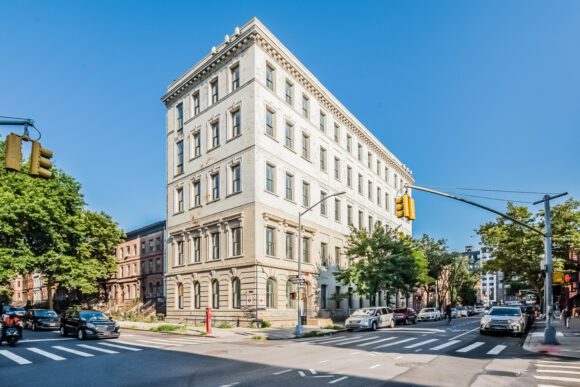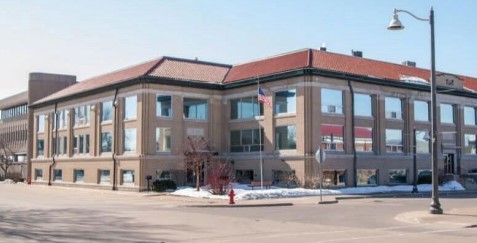The American Mill & Warehouse at Silo City
1,090
Jobs Created
$16,816,634
Tax Impact
$45,912,591
Income Generated
$62,691,053
GDP Added
$122,253,745
Output Generated
The American Mill and Warehouse located in Buffalo, New York, are two of six massive industrial structures that have inhabited the expansive miles of grain mills and elevators that make up the iconic site known as Silo City for over a century. Appropriately nicknamed “Elevator Alley,” Silo City is the densest collection of concrete grain elevators in the world, and its position along the Buffalo Niagara River helped solidify Buffalo as the largest grain port on the planet. Silo City was decommissioned in 1963 following the decline of the grain industry. As a result, the American Mill and Warehouse buildings were left vacant for over 50 years until Generation Development Group, a boutique real estate development and consulting firm focused on providing housing solutions with the goal of creating transformational communities, saved it from disuse in 2020 to transform the historic buildings into a community-centered residential development featuring affordable rents, innovative programs and valuable resources. Thanks to various tax credits designed to clean up sites, promote historic preservation, and create affordable housing, residents of Silo City will soon have access to a myriad of resources, including educational programs, employment opportunities, sustainable solutions and art and cultural exhibits, to name a few.
A Brief History
Silo City was originally built in the early 1900s as a collection of six grain elevators and warehouses hosting six different companies who were all major players in Buffalo’s economy. The American Warehouse and Grain Elevator were built to serve as both a storage facility and research and development operation for the American Malting Company in 1906. The elevator was used for beer production in the Eastern market until Prohibition brought business to a halt. The remaining four historic structures include the Perot Malt House and Grain Elevator, which were established in 1907 and used for malting and storing barley. Built in 1925 and comprised of about 120 feet of solid concrete, the Marine A Grain Elevator was considered the first of its kind. The sixth and final structure, the Lake and Rail Elevator, was built in four steps from 1927 to 1930, reaching an astounding total capacity of 4,400,000 bushels by the time of its completion. Operations came to an end for Silo City in 1963 as a result of a change in shipping routes. In recent years, portions of Silo City have already undergone some smaller scale restoration efforts and are being used for things like sustainable agricultural and environmental practices, hands-on architectural learning programs and a number of unique arts and cultural experiences.
About the Rehabilitation
The first phase of rehabilitation will transform the American Mill and Warehouse buildings into an affordable, workforce and market-rate residential complex offering 168 studio, one, two, three and four-bedroom apartment homes spanning 405 to 1,910 square feet of living space. In the effort to preserve as much of its history as possible, the development team will salvage some of the original early 19th century materials used in the initial construction. Exposed steel, polished concrete floors and columns, distressed brick and even some original machines, carts and railings, will be restored to maintain and ultimately accentuate the structures’ historic industrial charm. Exterior patio and outdoor spaces will also be included in the new design, along with various coverings, ornamental lighting and niche gardens.
Valuable Resources
In addition to the new residential units, 40,000 square feet of the rehabilitated property will be used to provide supplementary resources to the community, including office spaces and a business incubator encouraging entrepreneurship and innovation. Classrooms for seminars, training and continuing education will also be incorporated, along with a fitness and wellness center offering aerobics, yoga and health education. Public seating and pedestrian pathways will line the picturesque waterfront, and a hydroponic garden with locally grown organic greens will be established to promote healthy eating and nutrition education. Potential exhibition space for art installations and galleries, concerts, theatre, lectures and more will be explored in the adaptive reuse of the American Mill and Warehouse to support Silo City’s evolving position in the art and cultural scene of Western New York. A number of the region’s top cultural institutions are currently in partnership talks with the development team in hopes for future collaboration opportunities in the proposed space.
Sustainable Operations
The adaptive reuse of the American Mill and Warehouse was selected as New York State’s first “Fitwel Community Pilot,” by Fitwel, the world’s leading certification system committed to building health for all. Energy-efficient appliances, low flow water fixtures, low VOC paint, solar lighting and eco-friendly landscaping and maintenance are all included in the rehabilitation plans, with the potential for additional renewable energy opportunities as the project progresses. Perhaps one of the more intriguing sustainability initiatives is the implementation of a hydroponic garden. The hydroponic gardening method is an indoor growing approach allowing plants such as herbs, fruits and vegetables to grow year-round and without the need for soil. The unique characteristics of hydroponics foster a number of benefits for consumers and producers alike, including a lowered risk of pest and disease contamination as result of its soil-free practice, the accelerated growth of crops, an extended growing season and surprisingly, a reduction in water usage as many hydroponic gardens actually require less than conventional gardens.
Community Impact
The positive impacts of the historic rehabilitation of the American Mill and Warehouse at Silo City permeate the environmental, social and governmental (ESG) sectors of Buffalo, New York. With a focus on education, health and wellness, economic growth, arts and culture, and environmental safeguards and advancements, the reimagined property, featuring new resources and constructive programs, will bolster up and propel forward the already evolving Silo City neighborhood. Through rehabilitation, Buffalo’s significant industrial heritage will be preserved, and residents will be able to find some financial relief and renewed hope with the introduction of quality, affordable housing in the area. New employment opportunities will also surface both in construction and in the new businesses set to occupy the reinvented property, ushering in new income and tax revenues to stimulate the local economy. The revitalization blueprints of the American Mill and Warehouse at Silo City reflect the inspiring efforts of Buffalo locals on a much larger scale. Their collective commitment to both teaching and practicing sustainable development, and their dedication to fostering a diverse and supportive community for all, will not only remain at the forefront of Silo City’s daily operations, but will shine even brighter in the extensive adaptive reuse of the American Mill and Warehouse buildings that reside on the historic site.
Click here for a sneak preview.
About the Developer

Generation Development Group provides housing solutions with the goal of creating transformational communities. Founded in 2013, the Generation Development team facilitates the creation of holistic mixed-use real estate development throughout the U.S. The firm uses the social determinants of health as the key drivers of human-centered design. With extensive experience undertaking Public/Private Partnerships, the Company seeks to maximize social, environmental, and financial returns for its partners and the communities in which they serve.
Address:
139 Buffalo River Place
Buffalo, New York 14210


